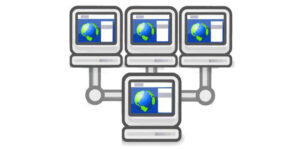The Social And Mobile Workplace: Climate Change Is Real
We’ve all watched (and some of us have helped) Social and Mobile (SM) rise to the forefront of the world of work. It’s applied a new
We’ve all watched (and some of us have helped) Social and Mobile (SM) rise to the forefront of the world of work. It’s applied a new
Email may be the predominant form of communication in business, but it’s not the only medium. Moreover, it’s not used for the most important moments. Face-to-face meetings

A 2014 Partners in Leadership study on workplace accountability revealed some contradictory results: 82% of respondents said they had no ability to hold others accountable,
“They’re here.” While horror movie fans might hear this line and immediately think of Poltergeist’s unhappy spirits, managers will think of another, potentially scary group:

Virtual teams make great business sense. But before you unleash your workforce, it pays to develop a coordinated technology plan.

2013 was all about growth at TalentCulture — so many ideas from so many voices! Which posts and people were most popular? Here’s a taste

Mobile recruiting is revolutionizing HR. Now it’s time for mobile hiring to step in where the mobile candidate experience leaves off…

Once in awhile we come face-to-face with reminders that HR really has come a long way, baby

Social media is redefining influence in all respects. What does this mean for employer and personal brands? Let’s talk about it…

Next-generation leaders have landed, with technology as a constant companion. What should we expect for the future of business?

TalentCulture is thrilled to be featured on Forbes List of “Best Websites For Your Career.” Why? In the spirit of lists everywhere, here are 3 reasons…

Twitter. For recruiters, it’s now a hot spot — not only for talent acquisition, but also for professional development. Who’s leading this social learning movement?